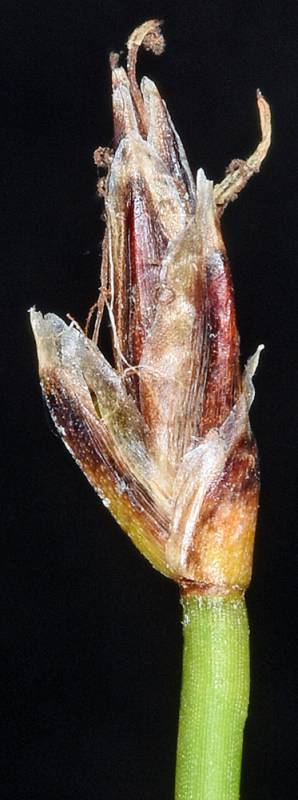Eleocharis parvula
Eleocharis suksdorfiana
little-head spikerush
Suksdorf spikerush
Leaves all basal and reduced to sheaths.
Spikelet terminal and solitary, 2-4.5 mm. long with 2-9 flowers;
scales of the spikelets spirally arranged, 1.5-2 mm. long, the lowest one empty;
perianth of 3-6 bristles, or none;
stamens 3;
style trifid, thickened at the base.
Achenes straw-colored, triangular 0.9-1.3 mm. long including the inconspicuous tubercle, which is confluent with the body of the achene.
Eleocharis parvula
Eleocharis suksdorfiana
Occurring on both sides of the Cascades crest in Washington; British Columbia to California, and from Kansas east and north to the Atlantic Coast.
Occurring on both sides of the Cascades crest in Washington; central British Columbia to California, east to Montana, Wyoming, and Colorado.
- Local floras:
BC,
CA,
OR,
WA
- Local Web sites:
CalFlora,
CalPhotos,
Flora NW,
PNW Herbaria
WildflowerSearch
iNaturalist (observations)
USDA Plants Database
- LBJ Wildflower Center
- SEINet
- Plants of the World Online
- Encyclopedia of Life
- Wikipedia
- Google Image Search
- Local floras:
BC,
CA,
OR,
WA
- Local Web sites:
CalFlora,
CalPhotos,
Flora NW,
PNW Herbaria
WildflowerSearch
iNaturalist (observations)
USDA Plants Database
- LBJ Wildflower Center
- SEINet
- Plants of the World Online
- Encyclopedia of Life
- Wikipedia
- Google Image Search



